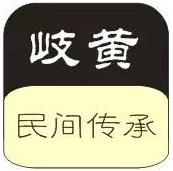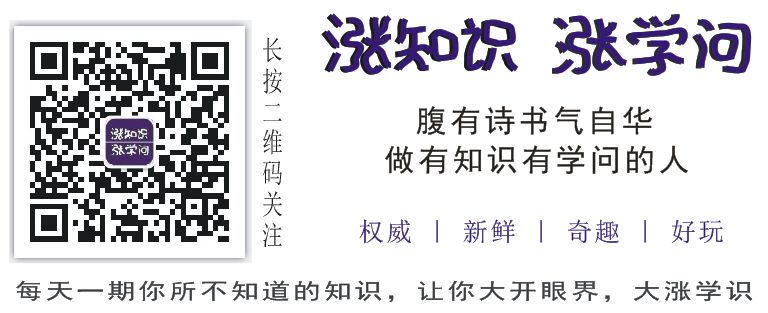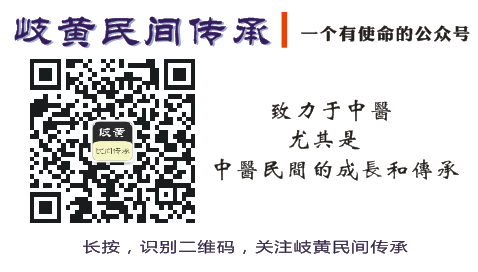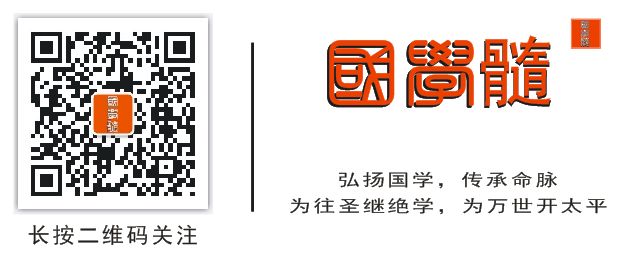

“A Mission-Driven Public Account”
Dedicated to the Growth and Inheritance of Traditional Chinese Medicine, Especially Folk Practices
Accompanying TCM Practitioners in Their Growth Every Day
Issue 2854

Author / Zhao Liming, Xi’an Yanta Zhaolu Tang TCM Hospital
Editor / Xu Honghong ⊙ Proofreader / Zhang Ruizhi
The content of this article is extracted from official medical books, magazines, and newspapers, with specific sources indicated at the end. The article title is the original title, and the content is extracted. There is no exaggeration, temptation, or violation of objective facts in the text, images, or videos, nor any malicious incitement, confusion, or misleading content. Everything is presented in its original form, pursuing authenticity, reliability, and authority. You can check the original documents based on the sources to see if they are consistent.

Research on Human Skin Patterns is Worth Promoting
The four diagnostic methods of TCM—observation, listening, inquiry, and palpation—have been applied clinically for thousands of years. To expand the application of observation diagnosis, the author suggests further strengthening clinical research and promotion of human skin patterns. At the same time, a call is made to establish corresponding research institutions and to reserve a place for the study of human skin pattern medical diagnosis in the textbook “TCM Diagnosis”. Descriptions of Skin Patterns in “TCM Diagnosis” In the preface of the textbook “TCM Diagnosis” from the first specialized Chinese medicine school, the Beiping Chinese Medicine Lecture Institute during the Republic of China period, there is a passage: “In addition to the four examinations, there are many aspects to consider. For example, blood tests, phlegm tests, sweat tests, liquid tests, and checking the chest, back, navel, breasts, limbs, hands, feet, nails, tongue, lips, teeth, skin, hair, and even actions, attitudes, and expressions should all be included in the examination.” The national higher medical education planning textbook “TCM Diagnosis” in the new century states: “In the progress of observation diagnosis research, it not only mentions observing complexion and facial features but also discusses the progress of observing hand patterns and nails.” The introduction of the ordinary higher TCM education 12th Five-Year Plan textbook “TCM Diagnosis” states: “Clinical practice has proven that certain local changes indeed have diagnostic significance for systemic diseases. TCM contains the contemporary idea of ‘biological holism’, believing that certain local parts of the human body can be seen as a ‘miniature’ of the whole body.” The Concept and Application of Skin Patterns Broadly speaking, skin patterns refer to the study of the innate skin pattern characteristics of the human body and the acquired changes in skin wrinkles and folds that occur with age and health interventions. Narrowly speaking, skin patterns refer to the orderly arrangement of skin fine lines on the palms and soles of the hands and feet, which are innate and unchanging throughout a person’s life, serving as a genetic information code inherited from one’s ancestors. Due to their unique and unchanging characteristics, they are widely used in fields such as criminal investigation, biometric identification, and medical research. In recent years, the most widely researched and frequently applied area of skin pattern medical research in clinical practice is the diagnosis based on finger palm skin patterns. However, after years of clinical observation and research, the author has found that skin patterns on the soles of the feet, forehead skin patterns on the face, wrinkles behind the ears, skin patterns on both sides of the nose, lip skin patterns, neck wrinkles, navel wrinkles, pathological skin wrinkles on the areolae of both genders, and fissured skin patterns on the tongue all reflect changes in the health status of the human body to varying degrees, providing direct guidance for clinical diagnosis. Individuals with concentric ring-shaped skin patterns on the pads of all ten fingers are prone to spleen and stomach diseases. Regardless of whether it is the left or right hand, if the index finger pad has a large arc-shaped fingerprint, and if the male has smooth and unwrinkled skin on the scrotum, it indicates low sperm viability, signaling oligospermia or azoospermia; for females, it suggests a tendency for mammary gland hyperplasia. If the thumb pad shows a significant “米” (rice) shaped skin pattern disturbance, it indicates that the person is under significant stress, which may often lead to headaches. Recently, a 72-year-old woman came to the clinic complaining of a heavy headache. After examinations at the hospital showed no abnormalities and medication had no significant effect, I noticed a distinct “米” (rice) shaped skin pattern disturbance on her left thumb pad. I informed her that her headache was likely due to psychological stress. The elderly woman replied while still holding her head with her left hand and banging the table with her right hand, saying, “How can the pressure not be great? I have been to court four times this month, fighting a property lawsuit with my biological daughter!” This confirmed the accuracy of skin pattern diagnosis. If a person’s heel skin has been brown and dry with crack-like skin patterns since childhood, it indicates congenital heart dysfunction. If the wrinkles on both sides of the nose are noticeably bifurcated, one should actively prevent and treat joint diseases; if the wrinkles on both sides of the nose are distinctly deep and shallow, long and short, it suggests a family history of cerebrovascular diseases. In summary, research on human skin patterns is highly practical and easy to learn, making it worth promoting and applying in clinical practice. Do not overlook its practical value just because some phenomena cannot yet be scientifically explained. As Master He Ren of Traditional Chinese Medicine once said: “There may be things that current scientific levels cannot fully understand or explain. It is important to treat unexplained phenomena with caution in the pursuit of knowledge; it is not right to dismiss them lightly.” Search for and follow the Qihuang Folk Inheritance public account on WeChat to learn more about TCM secret formulas. Copyright Statement:○This article is extracted from“China Traditional Chinese Medicine News”, Issue 5029, February 25, 2019.○ Copyright belongs to the relevant rights holders. If there is any improper use, please contact us for immediate deletion.I Submission Email:[email protected]
I Warning:This platform’s articles are for the popularization of TCM knowledge only and are intended for reference and learning by professional TCM practitioners. They do not constitute prescriptions or any recommendations or guidance. Please do not blindly try medications; this platform does not bear any responsibility for any consequences arising from this. If needed, please use under the guidance of a physician. All articles published on this platform only represent the author’s views.
Recommended Reading[Classical Essence]Selected Excellent Articles from the Public Account:① Traditional Chinese Painting: Teaching You to Paint Impressionistic “Cockscomb Flower and Beetle” with Every Stroke② From Reproductive Love to Immortal Romance, the Mysteries of Bedroom Techniques—Exploring the Meaning of “Fengshen Yanyi” (Part 2)③ Zhu You Technique: The Secret Technique of Soul Retrieval[Knowledge Growth]Selected Excellent Articles from the Public Account:① The Qin Dynasty Had the “Four Great Legions” to Unite China; What Was the Final Destination of the Legion That Swept Across the Land?② This Woman Had “Lu Wu’s Talent but No Lu Wu’s Evil”; She Ruled from Behind the Curtain and Led a Legendary Life③ Chiang Kai-shek’s Slap Created an Image of a “Just Judge” Who Hated Evil; But Why Was He Afraid to Strike?[Qihuang Folk Inheritance]Selected Excellent Articles from the Public Account:① The Magical Folk Method of Transferring Sores and Tumors from Important Areas to Secondary Areas—Clinical Application of the Transferring Sores Method② Difficulty Falling Asleep, Frequent Dreams, Light Sleep, Early Awakening, and Insomnia—A Brief Discussion on Professor Xu Hao’s Experience in Treating Insomnia③ The Lin Family’s Over 100 Years of Experience in Treating Bones: Lin Ruga’s Bone Supplementing Pill Treated 188 Cases of Fractures④ Irregular Sexual Life and Premature Ejaculation—Professor Li Yaqing’s Clinical Experience in Treating Male Diseases Combined with Anxiety and Depression⑤ Introducing an Ancient Secret Formula—Da Cheng Dan Formula⑥ Phlegm-Dissolving and Mass-Reducing Formula for Treating Gastric Cancer, Intestinal Cancer, Esophageal Cancer, and Other Digestive Tract Tumors and Other Malignant Tumors⑦ Self-Formulated Zhenxiong Decoction for Treating 76 Cases of Impotence, Balancing Yin and Yang, Addressing Both Deficiency and Excess, and a Wonderful Medicine for Nourishing and Unblocking⑧ Yijing Decoction for Treating Infertility, Impotence, Premature Ejaculation, Lumbar and Knee Weakness, Fatigue, and Lethargy—A Brief Analysis of Professor Wang Jinsong’s Clinical InsightsFor more exciting and excellent content, please check the historical articles.



